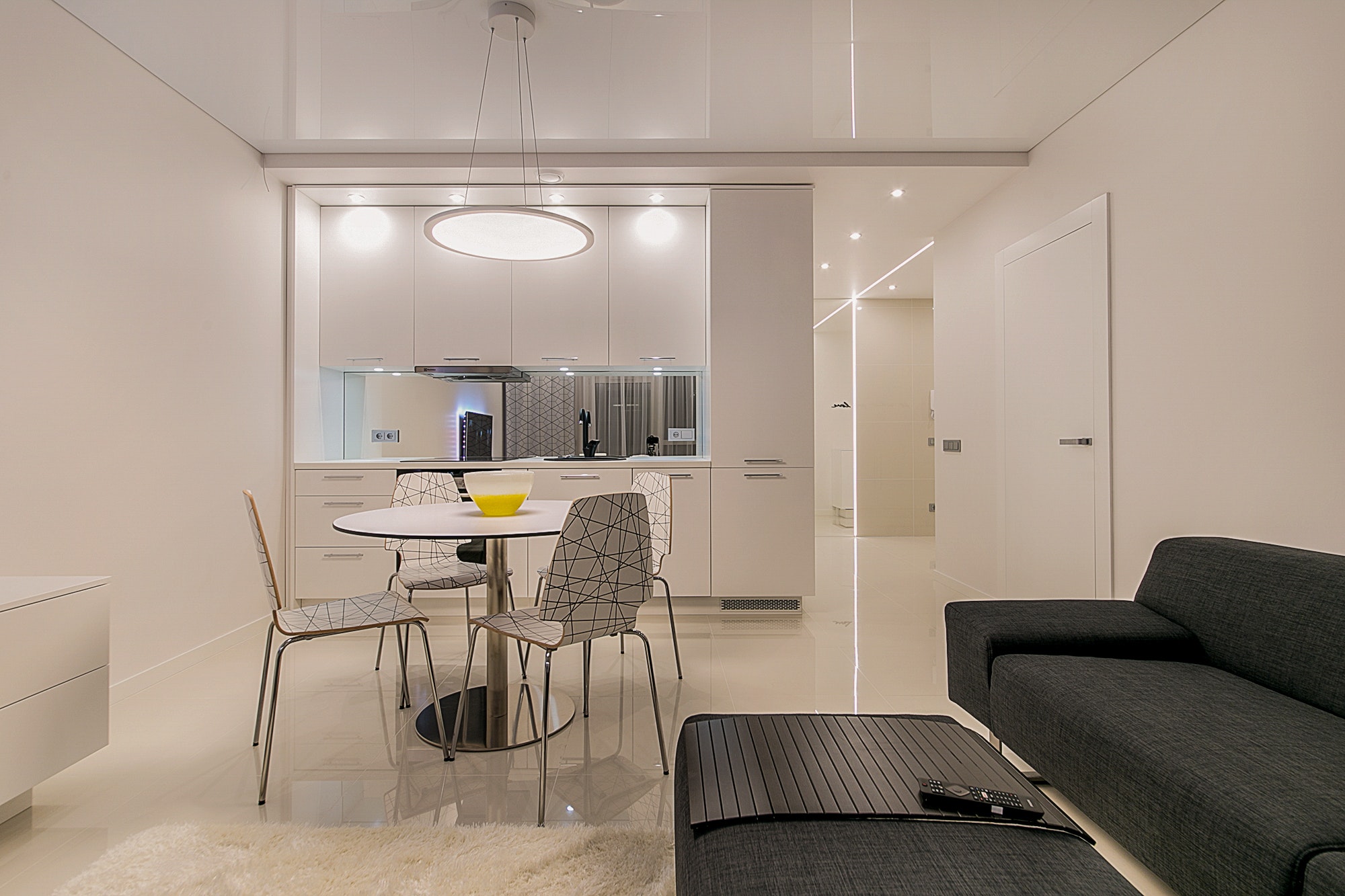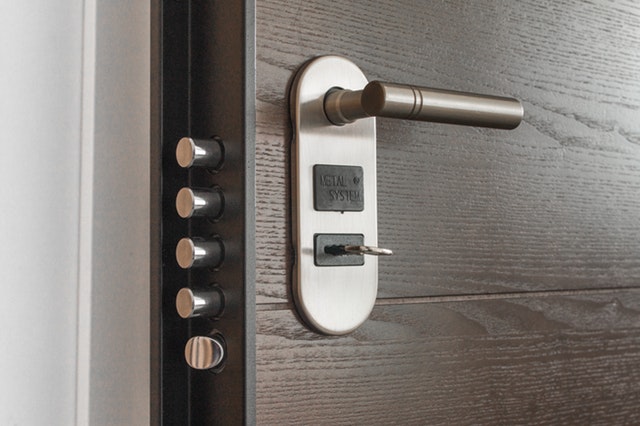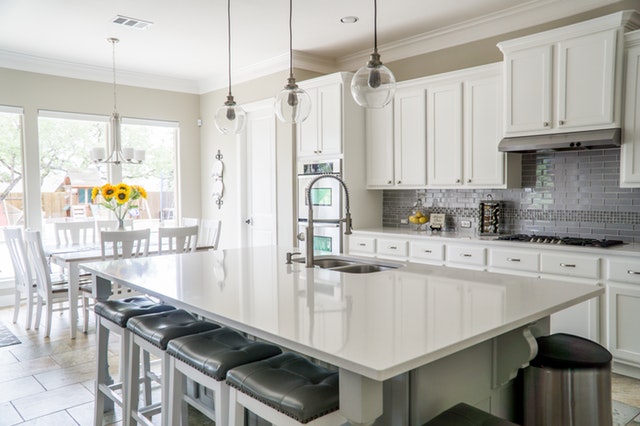How To Turn A “Dumb” Home Into A Smart Home
 Having a “smart home” is a trend that is popular. What does it actually mean? Smart home technology improves energy-efficiency, increases security, and creates more convenience for the home’s occupants.
Having a “smart home” is a trend that is popular. What does it actually mean? Smart home technology improves energy-efficiency, increases security, and creates more convenience for the home’s occupants.
Innovative smart home technology improves with the deployment of the Internet of Things (IoT), 5G wireless broadband, and the use of artificial intelligence (AI) programming. Many things that an owner and/or occupant of a home needs or wants may be done for them by smart home technology.
Energy-Efficiency
Green energy systems include installing energy-efficient windows and perhaps solar panels along with battery storage. Moreover, by managing micro-zones within a home, money is saved by not wasting it on heating or cooling when not needed.
Management of temperature control is possible with smart home technology that allows the heating and air-conditioning system to direct hot or cold air to the rooms that need it, only when occupied. These systems turn off the zone when the room is not in use.
Advanced systems learn the occupant’s typical home-use patterns and anticipate them. For example, if a person comes home around the same time each day, the house prepares the rooms for that person in advance of their arrival.
Advanced systems link vehicles with the home. For example, the climate control system may receive the GS location of the vehicle over the IoT. Then, the AI software of the house can determine the distance the car is from the home and the direction it is traveling. The AI guesses if the person is driving home and adjusts the home accordingly.
Increased Security
This is one of the best reasons to install smart home technology. Increased security may help to reduce risks of burglary, home invasion, and damage caused by unavoidable disasters.
Home security may use biometrics, such as facial recognition, fingerprints, iris scans, and others, to authorize entry for specific people and prevent unauthorized intruders.
Video surveillance of the property, inside and out, keeps a record of what is happening. Innovation in AI detects camera images that are not appropriate, such as someone trying to break into the home and alert the homeowners as well as law enforcement.
Alarms trigger for many things such as a break-in of a door or window or someone coming to the front porch to steal a delivered package.
Sensors, which are much more sophisticated than a basic smoke alarm, may warn of smoke, fire, natural gas leaks, carbon monoxide levels in a garage, and even plumbing problems. With nanny cams, monitoring of babies and children is helpful for their safety.
Convenience
Smart Home technology can respond to the occupants’ use automatically or be manually chosen. For example, the coffee maker can turn on automatically in the morning to have the perfect brew ready for those who wake up. The dog door can be unlocked from bed for the dog to go outside in the morning.
A real-time inventory, using the barcodes of foodstuffs, automates the re-ordering of regularly used items when depleted.
The car can be started remotely and warmed up or cool before the driver and passengers enter it. During wintertime, entry steps can be heated to melt ice and snow just in time for people’s arrival. A hot tub can be turned on remotely so that it is fully heated up and ready for use when the owner’s come home.
Summary
There are so many innovations in smart technology already available and more on the way. Homeowners who invest in this smart technology may not only get to enjoy their home more, they may save on energy bills, and might also get a higher resale value for the “smart” home when selling it. It’s worth considering.
If you are in the market for a new property or interested in refinancing !

 If you’ve just moved into your new home and you have a pet, you may be thinking of installing a pet door. A pet door is a permanent door feature that is cut into the bottom third of an entry door. Before making a permanent alteration to your door, consider the pros and cons of installing a pet door.
If you’ve just moved into your new home and you have a pet, you may be thinking of installing a pet door. A pet door is a permanent door feature that is cut into the bottom third of an entry door. Before making a permanent alteration to your door, consider the pros and cons of installing a pet door.  One renovation that may add value to a home is an in-law apartment. Even if a homeowner does not have any relatives, an in-law apartment makes wonderful guest accommodations. It is possible to rent it when unoccupied to earn some money.
One renovation that may add value to a home is an in-law apartment. Even if a homeowner does not have any relatives, an in-law apartment makes wonderful guest accommodations. It is possible to rent it when unoccupied to earn some money. One of the best things about moving into a new home is personalizing it and really making it yours. From hanging wall art to arranging furniture to finding the perfect spot for your grandmother’s hand crocheted afghan, it’s a real joy to decorate.
One of the best things about moving into a new home is personalizing it and really making it yours. From hanging wall art to arranging furniture to finding the perfect spot for your grandmother’s hand crocheted afghan, it’s a real joy to decorate. Those who want to renovate a home usually do this to make it more spacious, improve its condition, and to add amenities. However, it is also important to consider if the renovation has the potential to add value to a home.
Those who want to renovate a home usually do this to make it more spacious, improve its condition, and to add amenities. However, it is also important to consider if the renovation has the potential to add value to a home.